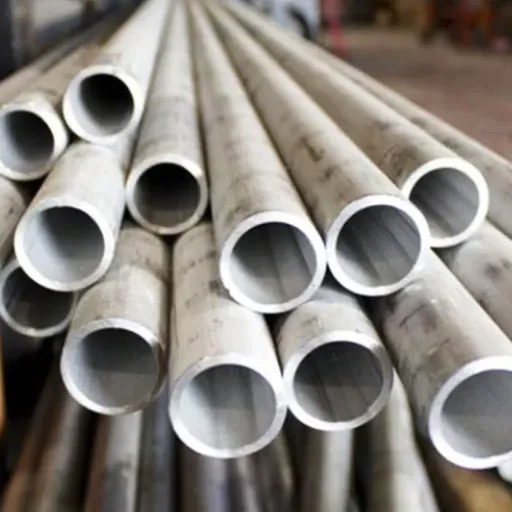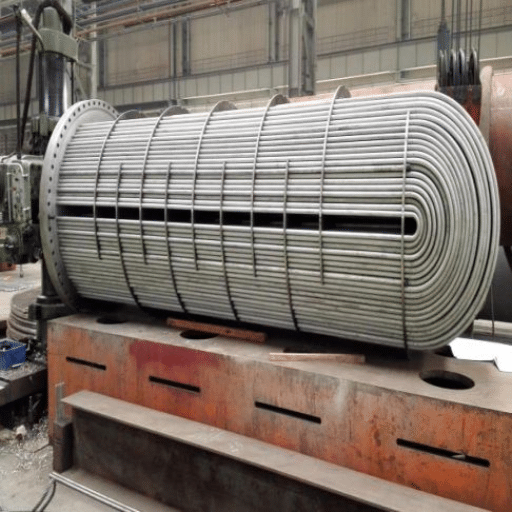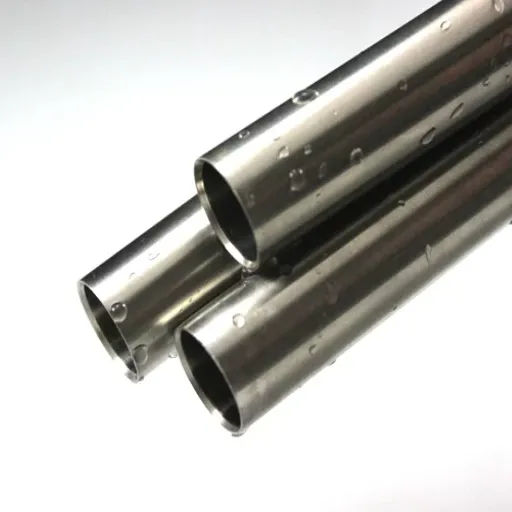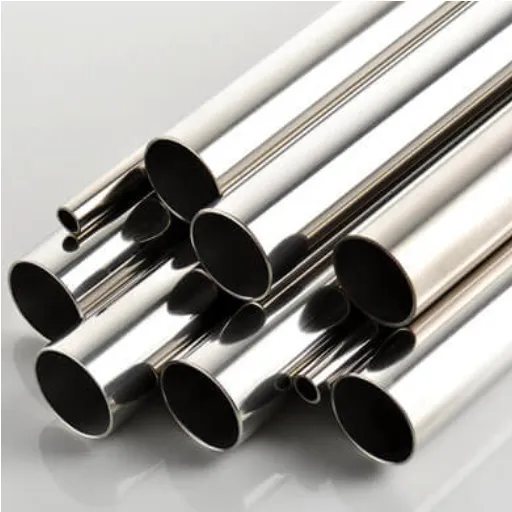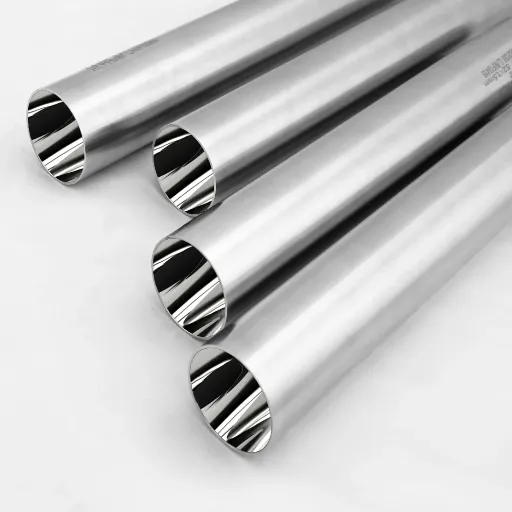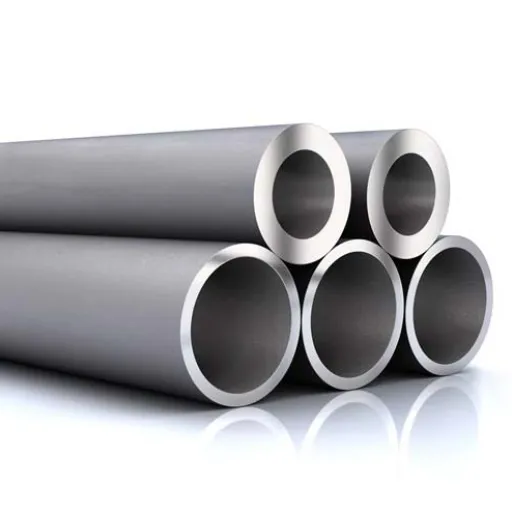A312 stainless steel pipes are one of the greatest options for experts in many different sectors when it comes to strong and flexible solutions in industrial piping. These seamless and welded austenitic stainless steel pipes are made to endure the most extreme environments and provide outstanding power, anti-corrosion ability, and longevity.
This article covers the specific benefits of A312 stainless steel pipes, their different uses in various industries, and the main reasons why they are trusted for crucial processes. You may be a contractor, an engineer, or a supplier looking for dependable data; this guide will give you strong cooperation ideas to make the most out of these high-quality materials. Keep following us as we reveal the reasons why A312 stainless steel pipes are the unbeaten choice in today’s demanding surroundings.
Introduction to A312 Stainless Steel Pipe

What is A312 Stainless Steel?
A312 stainless steel is a term that designates a specific type of stainless steel pipe which is either seamless or welded as per the ASTM International standards. Such pipes are made out of reliable austenitic stainless steel, which consists of 304, 316, and 321 grades that have been characterized by their excellent durability, corrosion resistance, and high-temperature strength.
🎯 Key Characteristics:
- Material Composition: Austenitic stainless steel (grades 304, 316, 321)
- Manufacturing Types: Available in seamless and welded forms
- Primary Advantages: Excellent durability, corrosion resistance, high-temperature strength
- Industry Applications: Petrochemical, oil & gas, power generation, food processing
- Performance: Transports liquids and gases under extreme conditions
Types of A312 Stainless Steel Pipes
A312 pipes are divided into different types according to their makeup, the way they are produced, and where they are used. The principal types consist of:
1. Seamless Pipes
Seamless pipes are made through a process that does away with welding or joints completely, thus providing strength and uniformity to the highest degree. These pipes fit best for areas where there is high pressure and temperature; therefore, they are extensively used in industries like oil and gas, chemical processing, and power plants.
2. Welded Pipes
Welded A312 pipes are produced by connecting steel plates or coils through welding which makes it an economical option for non-critical applications. Modern welding techniques applied ensure that the pipe will last long and be not affected by corrosion, therefore, even if they are used to carry fluids in moderately aggressive environments, they can still be considered durable.
3. ERW (Electric Resistance Welded) Pipes
Pipes involved in electric resistance welding require power to join the edges of the pipe together. Their surface finish and accuracy are outstanding, and hence they are used commonly in areas of low to moderate pressure and low to medium-size applications.
4. EFW (Electric Fusion Welded) Pipes
Heating the metal and at the same time fusing it is the process that EFW pipes go through to ensure good resistance to corrosion and strength. They are the pipe or tube that is used in supplying corrosive substances or in applications requiring high mechanical performance.
5. SCH (Schedule) Pipes
A312 pipes can also be based on the schedule, which reflects the wall thickness of the pipes. Examples such as SCH 10, SCH 40 and SCH 80 tell about the three different wall thicknesses that are made to meet the requirements of different pressures and temperatures, and hence they are suitable for various industries.
Each type of A312 stainless-steel pipe has its unique applications, which guarantees the reliability of pipes in various demanding scenarios.
Applications of A312 Stainless Steel Pipe
The properties of A312 stainless steel pipes extreme strength, resistance to corrosion, and multiplexing under harsh different conditions make it no surprise that they are preferred in several areas of industries throughout the globe. The major applications are given below:
💡 Industry Impact:
These pipes and their versatility have not only made them a popular choice in various industries but have also ensured high performance, reliability, and long-term operational efficiency under difficult conditions.
ASTM A312 Standard Specification

Overview of ASTM A312
The ASTM A312 specification defines the basic requirements of seamless, straight-seam welded, and heavy cold worked welded stainless steel pipes for high-temperature and general corrosive service. It considers the grades of stainless steel namely, 304, 304L, 316, and 316L which are the most utilized and regarded in different sectors because of their great resistance to rust and long life.
📋 ASTM A312 Requirements:
- Mechanical Properties: Strict testing for strength and durability
- Chemical Composition: Defined standards for each grade
- Dimensions & Tolerances: Precise specifications for consistency
- Corrosion Resistance: Standards for various environmental conditions
- Performance Consistency: Reliable operation across different conditions
The pipes made of the above-mentioned grades are subjected to strict mechanical and chemical properties testing in accordance with ASTM A312, thereby ensuring their reliability and durability in the most demanding applications. The ASTM A312 pipes are an integral part of the petrochemical, chemical processing, water treatment, and power generation industries among others.
Industry Evolution: This standard is consistently revised and upgraded to reflect technological advancements and changing industry needs thus, it keeps being a critical part of modern engineering. By guaranteeing ASTM A312 compliance, production and distribution companies offer piping systems of high quality that cut across the whole world of authoritative standards.
Importance of Standard Specification for Seamless and Welded Pipe
The standard specification for seamless and welded pipes, such as ASTM A312, plays a crucial role in the safety, durability, and reliability of piping systems in industrial applications. These specifications outline the material composition, dimensional tolerances, mechanical properties, and testing requirements, ensuring that pipes can cope with high-pressure environments, corrosive substances, and extreme temperatures.
✓ Specification Benefits:
- Safety Assurance: Ensures pipes meet critical safety requirements
- Operational Efficiency: Promotes consistent performance across applications
- International Compliance: Meets global safety regulations
- Customer Trust: Builds confidence in product quality
- Manufacturer Reputation: Demonstrates commitment to excellence
Understanding Seamless vs. Welded Austenitic Stainless Steel Pipe
New statistics indicate that seamless austenitic stainless steel pipes over and wide-used hand in high-pressure and high-temperature applications because of their excellent strength and durability characteristics. In addition, they are the main materials in the oil and gas extraction, power generation and chemical processing industries where safety and performance are major concerns.
| Feature | Seamless Pipes | Welded Pipes |
|---|---|---|
| Manufacturing Process | No welding or joints; uniform structure | Steel plates/coils joined through welding |
| Strength & Durability | Excellent strength, minimal failure risk | Good structural integrity with modern techniques |
| Cost | Higher manufacturing costs | More economical option |
| Best Applications | High-pressure, high-temperature, extreme environments | Moderate conditions, cost-sensitive projects |
| Dimensional Uniformity | Consistent wall thickness | Better dimensional uniformity for mass production |
| Common Industries | Oil & gas, petrochemicals, power generation | Water treatment, food processing, architecture |
⚖️ Selection Guidance:
For the decision of which pipe type is appropriate, the engineers should weigh up specific performance needs against budget limits. Seamless pipes are the best solutions in extreme environments while welded pipes are the best choice in less challenging situations where the main considerations are precision and cost. Both kinds of materials are indispensable in the industrial world, and the choice might take into consideration thoroughly the operating environment and technical requirements of the application.
Manufacturing Processes for A312 Stainless Steel Pipe
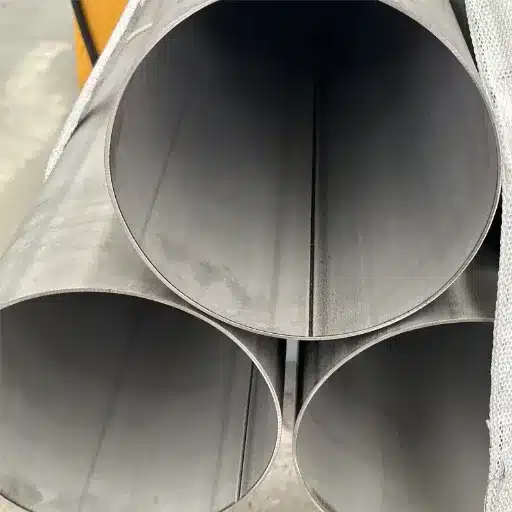
Seamless Stainless Steel Pipe Production
Seamless stainless steel pipes production is a very demanding process that, although highly specialized, results in both durable and high-quality products. To begin with, the process usually starts with a solid round steel billet, which is then heated to extremely high temperatures and pierced with a mandrel, thus forming a hollow tube.
Step 1: Billet Preparation
Process begins with a solid round steel billet heated to extremely high temperatures.
Step 2: Piercing
Heated billet is pierced with a mandrel to form a hollow tube.
Step 3: Elongation & Shaping
Hollow tube undergoes elongation, shaping, and sizing to meet specifications.
Step 4: Finishing
Advanced techniques like cold drawing or hot extrusion refine surface finish and ensure precise tolerances.
Furthermore, seamless stainless steel pipes are particularly made for applications where the greatest possible material strengths, resistance to corrosion, and ability to withstand extreme pressures and temperatures are required. The oil and gas industry, petrochemicals, and power generation are the sub-industries that commonly make use of these pipes.
Welded Austenitic Stainless Steel Pipe Fabrication
Welded austenitic stainless steel pipe fabrication is a process that consists of joining stainless steel through welding techniques, which in turns transforms flat-rolled sheets or plates into tubular shapes. Technological advances in the field of fabrication have not only increased the quality but also the efficiency of the pipe production.
⚙️ Modern Welding Advantages:
- Laser Welding: Highly precise joints with superior quality
- Plasma Welding: Exceptional durability and corrosion resistance
- Automated Systems: Increased production rates with fewer defects
- Quality Control: Stringent measures ensure consistent output
- Cost Efficiency: More economical than seamless alternatives
As per the most recent data available, the construction, water treatment, and food processing sectors are the main ones drawing heavily on welded austenitic stainless steel pipes because of their ability to keep the structural integrity intact throughout the different environmental conditions. The slowly growing global demand will be the case as these pipes are withstanding the test of time like in the case of those in sustainable infrastructure development.
Effects of Cold Working on Pipe Properties
Cold working, or work hardening, considerably influences both the mechanical and physical characteristics of austenitic stainless steel pipes. The metal deformation through different processes such as rolling, drawing, or pressing ends up with the increase of tensile strength and hardness but the other way around for ductility which gets reduced.
| Property | Effect of Cold Working | Benefits |
|---|---|---|
| Tensile Strength | Increases significantly | Higher load-bearing capacity |
| Hardness | Enhanced | Better wear resistance |
| Ductility | Reduced | Trade-off for strength gains |
| Performance | Improved in high-pressure systems | Superior corrosive environment handling |
⚠️ Important Consideration:
It is, however, necessary to point out that too much cold working can induce residual stresses that may in turn affect long-term durability. Thus, it is vital to find the right compromise between cold work and retaining material properties.
Specifications and Properties

Wall Thickness and Pipe Sizes
The cold-worked austenitic stainless steel pipes comes with a vast variety of wall thicknesses and diameters to comply with different industrial requirements. By using the information from the latest studies, the standard wall thicknesses have been defined from Schedule 5S to Schedule XXS, thereby enabling the use both in low-pressure and high-pressure applications.
📐 Size Specifications:
- Wall Thickness Range: Schedule 5S to Schedule XXS
- Nominal Diameter: 1/8 inch to 24 inches
- Pressure Range: Low-pressure to high-pressure applications
- Selection Factors: Working pressure, temperature, medium aggressiveness
- Performance Goal: Optimal durability and reliability
Comparison of TP304 and 316L Grades
TP304 and 316L are two of the most popular categories of stainless steel, both have different upsides according to their chemical content and designated uses. TP304 is very versatile and therefore is the most common type of 18/8 stainless steel, the name being derived from its 18% chromium and 8% nickel content.
💡 Selection Tip:
When it comes to making a choice between TP304 and 316L then, environmental exposure, corrosion risks, and budget are the key considerations. Often, 316L is the choice for a longer service life and reliable performance when the corrosion resistance is high.
Mechanical and Physical Properties of A312 Pipes
The A312 pipes mechanical and physical properties are quite literally their strongest selling points and because of these, they can be very versatile and reliable thus used in various industries. The main reason for the A312 pipes production is the different types of stainless-steel grades such as TP304, TP304L, TP316, and TP316L, each having its unique characteristics.
Tensile Strength and Yield Strength
A312 pipes are usually characterized by high tensile strength which sometimes goes beyond 515 MPa along with a yield strength of 205 MPa or more depending on the specific grade used. All these characteristics make them very hard to deform under stress.
Corrosion Resistance
The A312 pipes have proved their resistance against rust and pitting by being exposed to harsh industrial environments, chemicals and water for a long period, thanks to their stainless-steel composition. However, the Resistance of grades like 316L is again enhanced because of their molybdenum content.
Thermal Properties
These pipes possess very good thermal conductivity and would also be able to retain all their physical properties when subjected to a range of temperatures. Certain grades can also be applied to the cryogenic (low-temperature) sector.
Durability and Toughness
A312 pipes maintain excellent toughness even in the case of high-pressure applications making them ideal for use in oil and gas, chemical processing, and marine industries prone to demanding conditions.
Gaining insight into A312 pipes mechanical and physical attributes is of paramount importance when assessing their applicability in specific cases. In determining the grade, one should consider both the operating conditions and other factors such as temperature tolerance, strength, and corrosive substances present.
Applications and Industry Usage
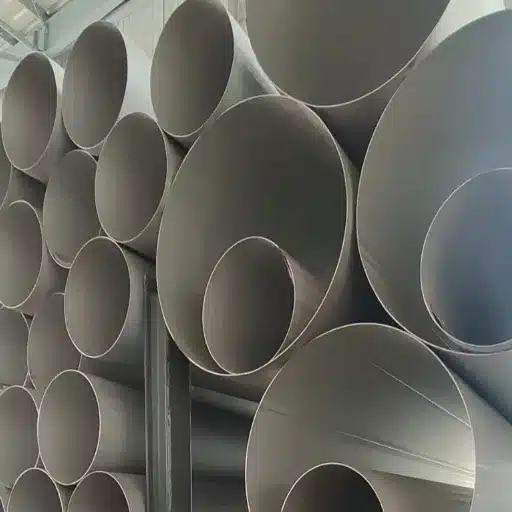
Industries That Commonly Use A312 Stainless Steel Pipe
A312 stainless steel pipes are the go-to material for the several industries where their longevity, resistance to corrosion, and capacity to bear high pressure and temperature are the main advantages. However, the most important fields are:
🛢️ Oil and Gas Industry
The pipes are in the first place used for the transport of natural gas, crude oil, and refined petrochemicals. Their ability to withstand harsh environments and non-corrosive substances made them the preferred material for such applications.
🧪 Chemical Processing
The whole chemical processing industry depends on A312 pipes in the form of no-leak and non-contaminating tubes for the mixtures and compounds used in the processes.
⚓ Marine Industry
The combination of factors like excellent resistance to saltwater corrosion, low weight, high strength, and the possibility of fabrication into large pieces makes the stainless steel pipes the most preferred metal for shipbuilding, offshore platforms, and desalination plants.
⚡ Power Generation
The A312 stainless steel pipes are the first choice in nuclear and thermal power plants because of their surface finish treating capacity and pressure/difference in temperature tolerance in steam headers, exchangers, and boiler components.
🍽️ Food and Beverage Industry
Closed sanitary systems in food processing and beverage production rely on A312 stainless steel pipes as a result of their hygienic properties and strong cleaning process tolerances.
These industries primarily rely on the A312 stainless steel pipes, which have superior properties, for their efficiency, safety, and long-term operational success. Because of their adaptability, they will still be in demand across sectors as industrial needs change over time.
Examples Illustrating the Use of A312 Pipe
📊 Case Study 1: Food Production Efficiency Improvement
The leading dairy production company had a difficulty with its corrosion and leak prone piping system. After moving to A312 stainless steel pipes, the firm was able to report a 30% reduction of maintenance costs as well as a considerable increase in product safety.
Key Results:
- 30% reduction in maintenance costs
- Significant increase in product safety
- Maintained crucial hygiene conditions
- Reduced operational downtime
📊 Case Study 2: Beverage Industry Sustainability Initiatives
A global beverage corporation aimed to enhance the sustainability of its bottling plants. By integrating A312 stainless steel pipes into their sanitary systems, they achieved robust performance under harsh cleaning regimes, ensuring long-term reliability.
Key Results:
- Robust performance under harsh cleaning regimes
- Long-term reliability assured
- Recyclable nature aligned with green initiatives
- Reduced environmental impact without compromising quality
These instances emphasize the importance of A312 stainless steel pipes in the success of operations in different industries. Their capability to endure the most demanding conditions whilst still being compliant with the industry regulations clearly makes them indispensable for both the aspects of efficiency and sustainability.
The Changing Trends in Stainless Steel Pipe Usage
The trend of stainless steel pipe usage is already witnessing a significant sales growth and the rising need from different industries like building, renewable energy, and healthcare is the reason behind it. The world has already opened up the debate on the importance of building sustainable infrastructure projects which will need materials like stainless steel to be resistant to corrosion and last long.
🔮 Emerging Industry Trends:
- Renewable Energy Technologies: Solar and wind power systems utilizing stainless steel for energy storage and structural supports
- Manufacturing Innovation: Automation and 3D printing enabling efficient, customized production
- Hybrid Materials: Combination with other metals for enhanced strength and durability
- Healthcare Expansion: Growing demand for sterile, durable materials in medical environments
- Smart Cities: Reliable water distribution and waste management systems
- Sustainability Focus: Reduced carbon footprint in production processes
These trends highlight the never-ending versatility and adaptability of stainless steel pipes as industries change. On a global scale, urbanization and smart cities are the challenges that require stainless steel solutions for infrastructure development and environmental management.
Frequently Asked Questions
❓ What is ASTM A312 and what functions does it perform in stainless steel pipes?
ASTM A312 is a standard designation for both seamless and welded austenitic stainless steel pipes. It is significant for the quality and performance of plumbing and industrial systems in general. The specification covers not just the chemical composition but also the mechanical properties and sizes of welded and seamless stainless steel pipes. The grades stated, like TP304 and TP304H, set the properties of these pipes that enable them to resist chemically aggressive and high-temperature environments. In agreement with ASTM A312, the pipes are guaranteed to be strong enough for different uses.
❓ What are the pros of using seamless stainless steel pipes?
There are many advantages of seamless stainless steel pipes over welded ones. They are produced using the seamless method, which gives the end product strength and durability and makes it less leaking prone. Besides, seamless pipes have a consistent wall thickness which boosts their mechanical properties and makes them perform better under high pressure. The lack of welds means there are fewer failure points which makes them perfect for critical applications. Moreover, seamless stainless steel pipes are produced in different sizes and grades which make them adaptable to many industrial uses.
❓ What is the influence of wall thickness on a stainless steel pipe’s performance?
The wall thickness of a stainless steel pipe is one of the main factors that determine its strength and durability. The pipe with thicker walls has a better chance of surviving the combination of high pressure and harsh environments, hence it can be used for heavy-duty applications. On the other hand, thinner walls can be employed in light applications where less strength is needed. It is necessary to choose the right wall thickness according to the planned use and the pressure loads. Also, the specifications provide the standard sizes of both welded and seamless pipes, which facilitates the selection of the right size for various projects.
❓ What are the differences between cold worked vs. heavily cold worked austenitic stainless steel pipes?
Cold worked austenitic stainless steel pipes are subjected to an operation that gives them an increase in strength and hardness at room temperature through deformation. In contrast, heavily cold worked austenitic stainless steel pipes are deformed to a greater extent which results in superior mechanical properties. This additional processing leads to an increase in both yield and tensile strength, thus, the pipes can be used in high-strength applications. However, this may also reduce ductility, so it is important to weigh the application’s specific requirements when making the choice between these two types of pipes. They are both compliant with multiple ASME and ASTM standards which guarantees their reliability in use.
❓ What are the primary areas of application for A312 stainless steel pipes?
Due to their outstanding resistance to corrosion and high strength, A312 stainless steel pipes have found an extensive range of applications in different industries. Some of the most common areas to use them are in chemical processing, oil and gas, and water treatment plants where strong and durable pipes that can withstand harsh conditions are necessary. In addition, these pipes are in use in the food and pharmaceuticals sectors where the purity of the product and protection of the material are important factors. They are all-rounders that can be used in both high-pressure and low-pressure systems. So, they are very often selected for many engineering projects. The specific grade and type of pipe will depend on the operational demands and environmental conditions of the application.
Conclusion
A312 stainless steel pipes represent the pinnacle of industrial piping solutions, combining exceptional strength, corrosion resistance, and versatility to meet the most demanding applications across diverse industries. From the seamless pipes that handle extreme pressures in oil and gas operations to the cost-effective welded variants serving construction and water treatment facilities, these austenitic stainless steel pipes continue to prove their indispensable value in modern infrastructure.
The ASTM A312 standard ensures that every pipe meets rigorous quality benchmarks, guaranteeing reliable performance in harsh environments, high-temperature conditions, and chemically aggressive settings. Whether you’re selecting TP304 for its economic versatility or 316L for superior corrosion resistance in marine applications, understanding the specifications, manufacturing processes, and mechanical properties empowers you to make informed decisions that optimize both performance and cost-effectiveness.
As industries evolve toward sustainability, automation, and smart infrastructure, A312 stainless steel pipes are positioned at the forefront of innovation. Their recyclability, durability, and adaptability to emerging technologies make them not just a practical choice for today’s projects but a strategic investment in tomorrow’s industrial landscape. For contractors, engineers, and suppliers seeking dependable, high-performance piping solutions, A312 stainless steel pipes remain the unbeaten choice in demanding environments worldwide.
Reference Sources
- Stanford University:
A comprehensive chart detailing various stainless steel grades, including ASTM A312 pipes. Stainless Steel Grade Chart
- Texas A&M University:
A design standard document for hydronic piping in utility plants, referencing ASTM A312 stainless steel pipes. Design Standard – Hydronic Piping for Utility Plants
- Michigan State University:
A technical document on utility distribution piping, specifying ASTM A312 stainless steel pipes. Piping for Utility Distribution

